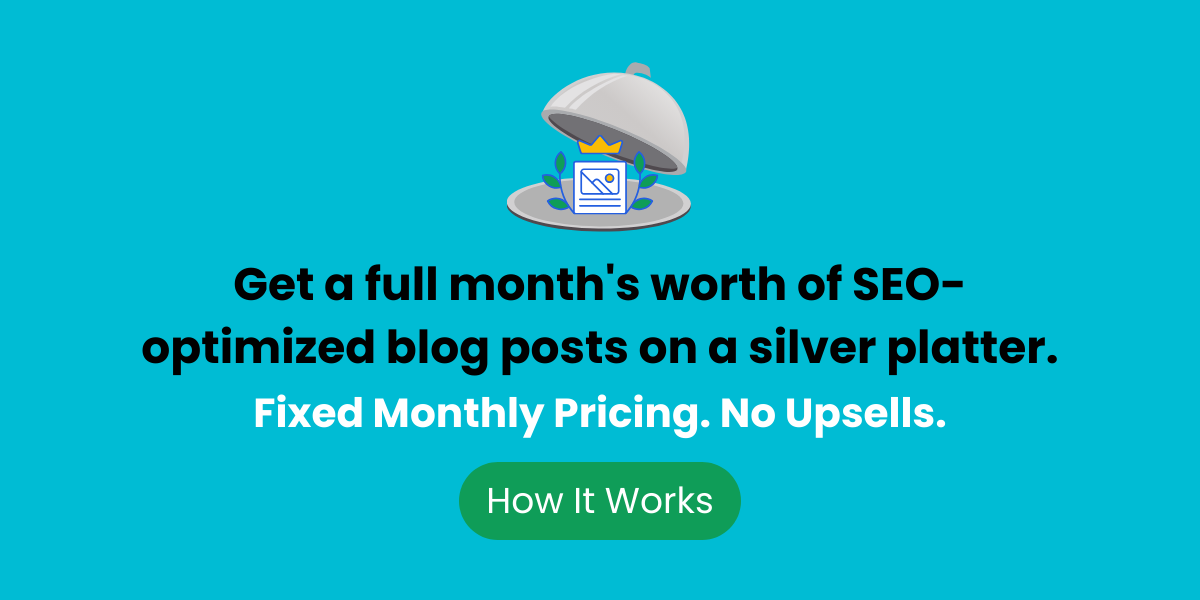Every click, every view, every sign-up can spell the difference between a booming business and one that’s struggling to make ends meet. In the world of insurance, harnessing the power of content marketing for insurance is no longer optional—it’s essential. With an average ROI reported at 1,389%, who wouldn’t want to leverage this strategy?
To stand out in the crowded insurance market, you need to cut through the noise. That means understanding what your audience is really looking for in an insurer.
Modern clients crave content that truly speaks to them – information that’s not only accurate but also engaging and relevant to their lives.
Transforming casual browsers into devoted followers requires more than just getting our message out there – it’s about speaking directly to their needs and aspirations
Content Marketing for Insurance: Strategies to Boost Your Business
As an insurance marketer with over a decade of experience, I’ve seen firsthand how content marketing for insurance companies can be a game-changer. It’s not just about creating content, but creating the right content that resonates with your target audience. By leveraging social media platforms and providing valuable online content, you can establish your insurance company as a thought leader in the industry.
Content marketing is a strategic approach that focuses on creating and distributing valuable, relevant, and consistent content to attract and retain a clearly defined audience. The goal? To drive profitable customer action and generate leads for your insurance business.
Understand Your Target Audience
If you want to create content that truly matters, you need to know your audience inside and out. What are their biggest insurance concerns, and what questions do they wish they had answers to? By analyzing customer data and conducting market research, you can gain a deeper understanding of their needs and preferences.
Get ready to revamp your insurance content marketing strategy by tuning in to your audience’s concerns and interests on social media platforms. By doing so, you’ll be able to craft a content strategy that resonates with their needs and preferences, ultimately leading to successful insurance content marketing efforts.
Create Valuable and Informative Content
The key to successful insurance content marketing is providing value. Share your expertise through blog posts, articles, videos, and infographics that address common questions and concerns. By consistently delivering helpful tips and insurance advice, you’ll establish your insurance company as a trusted resource.
Want to attract potential clients and establish yourself as a trusted authority in the insurance market? Develop online content that educates and engages, such as a blog post on clever ways to cut car insurance costs or an in-depth look at the various types of life insurance options.
Optimize Content for Search Engines
To maximize the reach of your insurance content, optimize it for search engines. Conduct keyword research to identify the phrases your target audience is searching for and incorporate them naturally into your web content. This will help your insurance website rank higher in search results, driving more organic traffic to your content.
To make your insurance website shine, don’t overlook the finer details. Think meta descriptions, header tags, and internal linking – these technical SEO elements can propel your site up the search engine rankings and create a smoother user experience, all while fostering trust and credibility with your audience.
Leverage Social Media Platforms
Social media platforms like Facebook, LinkedIn, and Twitter offer valuable opportunities to share your content and engage with your audience. Post links to your latest blog articles, share industry news, and participate in relevant discussions. This will help you build brand awareness and drive more traffic to your insurance website.
A well-crafted content marketing strategy can help you reach a wider audience and build trust with potential clients. One key component? Leveraging social media to target specific demographics and highlight your insurance company’s unique strengths.
Measure and Analyze Results
To continually refine your insurance content marketing efforts, it’s crucial to measure and analyze your results. Track metrics like website traffic, engagement rates, and conversions to identify what’s working and what’s not. This data-driven approach will help you optimize your marketing campaigns for maximum impact.
Get inside the minds of your audience by analyzing their online behavior. Google Analytics provides the clues you need to create a successful content marketing strategy that resonates with your insurance customers.
Types of Content to Create for Your Insurance Business
The strategies for content marketing in insurance are just the starting point; the real challenge lies in creating content that genuinely engages your audience and showcases your expertise. Drawing from my own experience in the insurance market, I’ve learned that it’s all about finding the right mix of content formats to build a strong online presence.
Blog Posts and Articles
Insurance content marketing relies heavily on blog posts and articles to provide in-depth information on a wide range of topics. From demystifying insurance deductibles to examining industry trends, this type of content allows you to speak directly to your audience’s concerns and provide actionable advice that resonates.
Want to demonstrate your insurance company’s authority in the industry? Create content that provides real value to potential clients. A post that guides readers through the process of selecting the right life insurance policy, for example, can position your company as a reliable advisor.
Infographics and Visual Content
Breaking up text-heavy blog posts with visuals like infographics, charts, and images makes complex insurance concepts easier to grasp. And when you share them on social media sites, you’ll drive more traffic to your insurance website and expand your online presence.
Your insurance company can create engaging online content by designing an infographic that breaks down the different types of coverage options. This visual asset can be repurposed across multiple channels, making it a valuable resource for clients navigating the claims process.
Videos and Webinars
Video content is increasingly popular among consumers, and for good reason. It’s engaging, easy to consume, and can help humanize your brand. Consider creating explainer videos that break down complex insurance topics or customer testimonial videos that showcase your company’s impact.
Webinars are another great way to provide valuable insurance content while engaging with your audience in real-time. Host a live Q&A session or a workshop on a specific insurance topic to establish your authority and build trust with potential clients. These interactive formats can help you connect with your audience on a deeper level and provide valuable insights into their needs and concerns.
Case Studies and Success Stories
Insurance companies that share real-life examples of their successes build a stronger connection with potential clients. These stories showcase how their products and services have helped others, establishing a foundation of trust and credibility.
When crafting a case study, zero in on the specific problem your client was struggling with, the solution you brought to the table, and the concrete results that followed. Don’t forget to include quotes from happy customers – it’s a great way to showcase the difference insurance companies can make in people’s lives.
Ebooks and Whitepapers
In-depth content like ebooks and whitepapers allow you to explore a specific insurance topic from every angle. By sharing valuable insights, you can entice visitors to share their contact information in exchange for access, generating leads in the process.
Consider creating an ebook that provides a comprehensive guide to choosing the right insurance policy or a whitepaper that explores the latest trends in the insurance industry. These in-depth resources can help establish your company as a thought leader and generate high-quality leads for your insurance business.
Building Trust and Authority Through Insurance Content Marketing
When it comes to the insurance industry, building trust is paramount. After all, clients are putting their most precious possessions – their health, homes, and businesses – in your hands. To gain their trust, you need to put their needs front and center through effective content marketing efforts.
Demonstrate Expertise and Knowledge
One of the most effective ways to build trust is to demonstrate your expertise and knowledge of the insurance industry. Share your insights on the latest trends, regulatory changes, and best practices to show your audience that you’re a reliable source of information. By providing clear, concise explanations, you’ll help your audience feel more confident in their insurance decisions.
Bulk up your online content by crafting a series of informative blog posts that dissect home insurance coverage. This approach will not only showcase your expertise but also provide invaluable insights, positioning your insurance company as a reliable resource for customers seeking answers to their insurance-related queries.
Address Common Pain Points and Concerns
The best way to establish trust with your audience is to tackle their pain points head-on. If they’re struggling to understand their insurance options or worried about the claims process, your content should offer practical solutions and reassurance that you’re there to support them.
A straightforward way to establish your insurance company as a trusted partner is to create a FAQ page that tackles the most pressing questions your clients often ask. You could also produce a series of step-by-step videos that guide clients through the claims process or help them choose the right car insurance policy for their needs.
Provide Transparent and Honest Information
Honesty is the best policy when it comes to building trust with your insurance audience. Keep your content transparent and clear, free from jargon and confusing technical terms. And remember, honesty is key – don’t hide any limitations or exclusions to your policies, be upfront and honest with your readers.
Clients appreciate honesty, even if it means they may not be eligible for certain types of coverage. By being transparent in your insurance content marketing efforts, you’ll foster a sense of trust and credibility with your audience and help them make informed decisions about their insurance needs.
Engage with Your Audience
Want to build trust with your audience? Start by encouraging conversation on your blog posts and social media updates. Respond to comments and questions with thoughtful, personalized answers, and show your audience that you’re genuinely invested in their thoughts and concerns.
Imagine having a community hub on your website where clients can swap stories, ask questions, and interact with others who share similar concerns. By doing so, you’ll be providing valuable online content that strengthens relationships and positions your insurance company as a trusted, client-centric partner.
Showcase Customer Testimonials and Reviews
If you want to win over potential clients, let the people who’ve already benefited from your insurance products and services do the talking. Highlighting customer testimonials and reviews in your content marketing is a great way to build credibility and trust.
Showcase real-life testimonials from satisfied customers on your website, social media channels, and marketing materials to demonstrate the value of your insurance products and services. This builds trust with potential clients, helping them see your company as a reliable partner.
What sets successful content marketing apart is its ability to connect with your audience on a deeper level. When you consistently deliver valuable insights and helpful information, your insurance company becomes the trusted resource clients turn to, leading to stronger relationships and business growth.
Use content marketing to connect with your audience and establish your insurance company as a trusted resource. Share valuable tips, optimize for search engines, engage on social media, and measure results to refine strategies. Create diverse content like blogs, videos, infographics, case studies, ebooks – build trust by addressing pain points transparently.
Optimizing Your Insurance Website for Content Marketing Success
You’ve poured your heart and soul into creating valuable content marketing for insurance, but if your website isn’t optimized, all that hard work might go unnoticed. Trust me, I’ve been there. As an insurance agent, your website is your digital storefront, and it needs to be inviting, user-friendly, and easy to navigate.
Your insurance website is essentially a storefront, and just like a physical store, it needs to be easy to navigate and appealing to customers. If it’s not, they’ll flee – fast. That’s why it’s essential to get your content marketing strategy just right, ensuring your website is optimized to convert visitors into clients.
Ensure Mobile-Friendliness and Responsiveness
In today’s digital age, more and more people are accessing website content on their mobile devices. In fact, over 50% of web traffic comes from smartphones and tablets. If your insurance website isn’t mobile-friendly, you’re missing out on a huge chunk of potential clients.
Flip your website’s viewing experience upside down with responsive design. This magical layout tweak automatically reshapes content to fit any screen size, making for a silky-smooth user ride. Oh, and did we mention search engines simply adore mobile-friendly sites, giving you an added SEO perk?
Improve Website Navigation and User Experience
Have you ever landed on a website and felt like you needed a map and compass to find your way around? Yeah, me too. And let me tell you, it’s frustrating as heck. Don’t let that happen to your insurance website visitors.
Build a navigation system that’s a breeze to use, and your users will thank you. Label your menu items with descriptive names, and organize your content into logical groups. And don’t forget a search function that actually works – it’s the key to helping users find what they need quickly and easily.
Implement Effective Calls-to-Action
You’ve got killer content, but what do you want your website visitors to do next? That’s where calls-to-action (CTAs) come in. CTAs are like signposts that guide users towards a desired action, whether it’s requesting a quote, scheduling a consultation, or downloading a resource.
Place your CTAs strategically throughout your website and make them stand out with contrasting colors and compelling copy. Use action-oriented phrases like “Get Your Free Quote Now” or “Download Our Ultimate Insurance Guide” to entice clicks.
Integrate Blog and Resource Center
Your blog and resource center are the heart and soul of your content marketing efforts. They’re where you showcase your expertise, provide value, and build trust with your audience. So, why bury them deep within your website?
Make sure your blog and resource center are easily accessible from your main navigation menu. Feature your latest articles and resources prominently on your homepage to encourage visitors to explore further. And don’t forget to optimize your blog posts with relevant keywords and meta descriptions for maximum SEO impact.
Optimize for Local Search
As a local insurance agent, your business relies on attracting clients from specific areas. To maximize your online visibility, it’s essential to fine-tune your website for local search. This means weaving in location-specific keywords throughout your website content, meta tags, and URLs.
Create a dedicated page for each location you serve, showcasing what sets them apart and the services you offer. Don’t forget to claim your Google My Business listing and double-check that your contact info is spot on across all online directories. This will boost your chances of popping up in local search results when potential clients are looking for insurance providers in their area.
Leveraging Social Media for Insurance Content Distribution
With a killer content strategy in place for your insurance website, it’s time to take it to the masses. And what better way to do that than through social media? With billions of users swarming various platforms, you’ve got a golden opportunity to connect with your target audience.
But before you start blasting your content on every platform under the sun, let’s talk strategy. Because let’s face it, not all social media channels are created equal, and what works for one insurance agent might not work for another.
Choose the Right Social Media Channels
Jumping from one social media platform to the next can be exhausting and ineffective. Instead, focus your energy on the channels where your target audience is most active and receptive to content similar to yours.
For insurance agents, LinkedIn is the ultimate networking hub, where thought leadership content shines. Facebook is perfect for building a community and sharing educational gems, while Twitter is ideal for quick industry updates and news bites. And let’s not forget Instagram – it’s a fantastic platform for showcasing your agency’s personality and behind-the-scenes fun.
Create Engaging and Shareable Content
Social media users are click-happy, folks. They zip through their feeds faster than you can say “information overload.” That’s why crafting attention-grabbing content is crucial – it’s your only shot at making a lasting impression.
Social media is all about stopping the scroll. So, how do you do it? Start with show-stopping visuals – think images, infographics, and videos that demand attention. Then, craft headlines that make people curious and descriptions that promise value. And don’t forget to add a dash of humor and personality to make your brand feel like a real person.
Interact with Your Followers
Social media is a two-way street, and engagement is the name of the game. Don’t just post and ghost – take the time to interact with your followers and build genuine relationships.
Respond to comments and questions in a timely manner, even if it’s just a simple “thank you” or a thumbs-up emoji. Share content from other industry thought leaders and engage with their posts too. And don’t be afraid to jump into relevant conversations and offer your expertise – just make sure you’re adding value, not shamelessly self-promoting.
Run Targeted Social Media Ads
Organic reach on social media is great, but sometimes you need a little extra boost to get your content in front of the right people. That’s where targeted social media ads come in.
Get your message in front of the right people with targeted ads on Facebook and LinkedIn. With options to target by demographics, interests, and behaviors, you can create campaigns that truly connect. Share your latest blog post, offer a valuable resource, or promote your insurance services to an audience that’s eager to listen.
Just remember to set clear goals for your ad campaigns and track your metrics closely. A/B test different ad copy and visuals to see what resonates best with your audience, and adjust your strategy accordingly.
Monitor and Respond to Reviews and Mentions
What people are saying about your insurance agency online matters. Whether you like it or not, social media sites and review platforms are filled with conversations about your business.
Stay on top of your online reputation by regularly checking in on customer reviews and mentions. Respond to every comment, good or bad, with a helpful and understanding attitude. This shows you genuinely care about what your clients think and are dedicated to delivering exceptional service.
Showcase the rave reviews from your satisfied clients on your social media channels and website to establish credibility and trust with potential clients. This will help you build a strong reputation in the insurance industry through content marketing.
Optimize your insurance website for success by making it mobile-friendly, easy to navigate, and full of effective CTAs. Don’t forget to leverage social media strategically to share engaging content and build relationships with your audience.
Conclusion
We’ve traversed the captivating landscape of content marketing for insurance, and it’s clear that simply spouting facts and figures won’t cut it. It’s about crafting narratives that genuinely resonate with your audience, educating and empowering them in the process.
Transforming your insurance business into a trusted authority in the industry requires more than just a strategy – it’s about building a reputation that shines through the noise. By truly understanding your audience, crafting content that speaks directly to their pain points, and harnessing the power of social media, you can sculpt a market presence that inspires confidence.
We’ve seen how videos can demystify complex policies or how infographics make dry data dance. Every blog post whispers another aspect of your brand promise into the ears of potential clients while ebooks position you as the sage on the digital hilltop.
The truth? Content marketing for insurance isn’t just necessary; it’s revolutionary in its capacity to build bridges where walls might have stood before. It’s not about selling but about serving—creating value so palpable that leads turn into customers almost organically because they believe in what you offer as much as you do.
The tapestry of our interactions is getting richer by the minute! Care to join me in exploring the exciting possibilities that arise from our shared experiences?
Frequently Asked Questions About Content Marketing for Insurance
How to do social media marketing for an insurance company?
Effective social media marketing for an insurance company involves creating educational content that addresses common questions and concerns. Utilize platforms like Facebook, LinkedIn, and Twitter to share tips on policy selection and claims processes. Engage with your audience by responding promptly to inquiries and comments. Additionally, leverage customer testimonials and case studies to build trust. Regularly analyze engagement metrics to refine your strategy.
How to Make Content for Insurance?
To create effective content for insurance, start by understanding your target audience’s needs and concerns. Focus on crafting informative and engaging articles that address common questions, clarify complex policies, and highlight the benefits of coverage. Utilize SEO strategies by incorporating relevant keywords to improve search engine visibility. Additionally, maintain a consistent tone that reflects your brand’s values and professionalism. Regularly update content to keep it current with industry trends and regulations.
How to do marketing as an insurance agent?
To effectively market as an insurance agent, start by identifying your target audience and understanding their specific needs. Develop a robust online presence through a professional website optimized for SEO to attract organic traffic. Utilize social media platforms strategically to engage with potential clients and share valuable content that highlights your expertise. Networking remains crucial; attend industry events and join relevant groups to build relationships. Finally, consider leveraging email marketing campaigns to keep in touch with prospects and provide them with tailored solutions.







